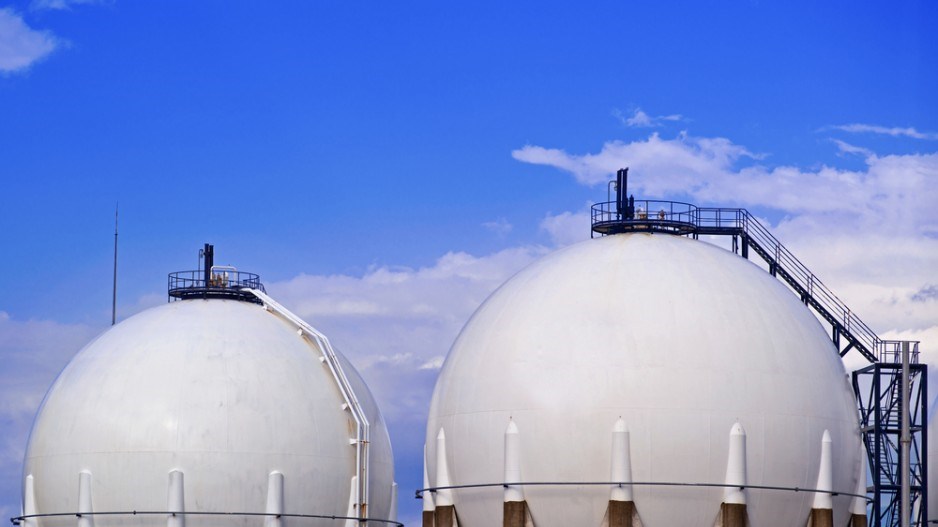British Columbia’s LNG sector, if developed, could add $7.4 billion per year over the next three decades to the Canadian economy, of which $5.3 billion would occur in B.C., according to a Conference Board of Canada report released February 29.
“There is a huge opportunity for investment, for economic growth, and for employment at a time when Canada needs all three of those. The risk for not going forward is that you miss that opportunity,” Len Coad, public policy research director, told the Bulletin on Monday.
The report, entitled A Changing Tide: British Columbia’s Emerging Liquefied Natural Gas Industry, considers an LNG industry of three hypothetical projects coming into service between 2021 and 2025, consisting of two larger-scale projects that include two liquefaction trains with a capacity of approximately six million tonnes per annum (mtpa) each, as well as a smaller-scale project that includes a single train with a five to six mtpa capacity.
Pipelines assumed to service the expanding LNG sector include the Prince Rupert Gas Transmission project that would supply natural gas to the Pacific NorthWest LNG project, the Coastal GasLink project to supply gas for the LNG Canada liquefaction terminal, as well as the Pacific Trail Pipeline project that would supply gas to Kitimat LNG.
According to the report, national employment would rise by 65,000 jobs (46,800 in B.C.). Indirect taxes would contribute $808 million and $577 million in revenue annually to the provincial and federal governments, respectively.
The provincial LNG tax would result in an additional $208 million in revenue for B.C., and increased drilling activity would result in an additional $686 million in royalty payments to the province over the lifetime of the projects. Between 2016 and 2045, the report suggests, an LNG industry in B.C. would boost average annual revenues for the provincial and federal governments by $3 and $3.2 billion, respectively.
This report was funded by Progress Energy Canada Ltd. and is available from the Conference Board's e-library.
“I think this report is more along the lines of pointing to the opportunity that is out there for the industry and for the people of Canada and British Columbia if we can proceed with projects,”Coad said, adding the intended audience of the report is firstly the general public, but more specifically government and corporate decision-makers on LNG. He noted the report’s projections factor in the current state of the energy sector.
“We think it is an achievable level, even in today’s environment. In terms of the economic analysis we did, we used the current public estimates for the cost of projects. On the upstream supply side, we used the [Petroleum Services Association of Canada] numbers for drilling costs, and we used our own long-term natural gas price forecast, which is at today’s level…. We used what we thought was a realistic, conservative set of numbers.”
With the Asia Pacific region serving as the largest and fastest-growing LNG market in the world, natural gas for the projects would be sourced from B.C.’s Montney tight gas and Horn River shale gas regions.
Developing the province’s LNG industry to the size assumed in the board’s report would result in the production of an additional five bcf per day of natural gas, which is roughly double 2014 production levels and would require an average annual investment of $7 billion per year to develop a 30 mtpa industry.
Challenges facing development of an LNG industry as envisioned in the report include the fact that it’s a new industry.
“It is a brand new industry, and so the supply-chain, end-market challenges are there,” Coad said. “The supply chain is not just about developing liquefaction plants, but the related pipelines and the upstream activity — getting all the facilities approved, financed and built.”
The assumed LNG projects are located in small, isolated communities that often lack sufficient populations with necessary skills, said the report. However, Aboriginal residents could help fill these positions. To effectively engage with these communities, governments and industry must develop strategies to mobilize and train these individuals.
Given the vast natural gas resources in northeastern B.C., the initial LNG capacity of 30 mtpa could be expanded to produce more LNG for the market, if market and regulatory conditions were favourable, according to the report.
Coad said: “Although the current downturn in crude oil prices has cast a shadow over LNG markets, developing B.C.’s LNG industry would open up new markets for Canada’s natural gas and generate economic benefits and employment opportunities that would not otherwise exist.”




